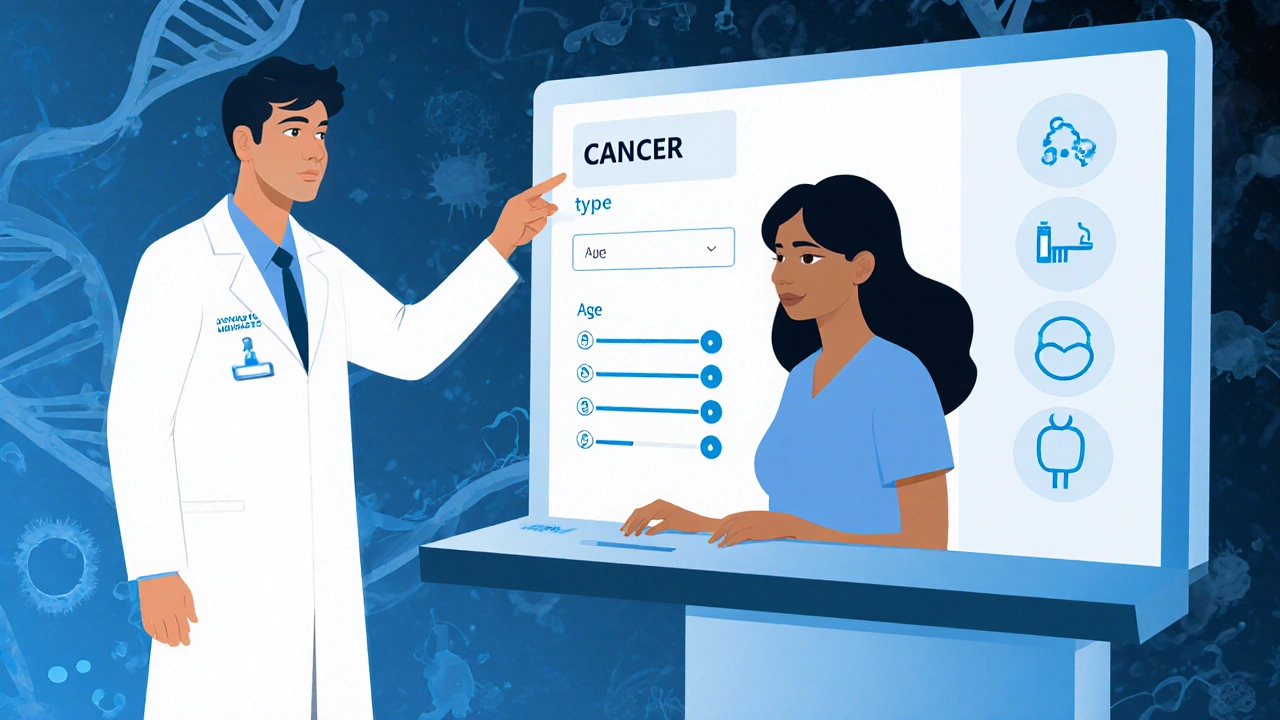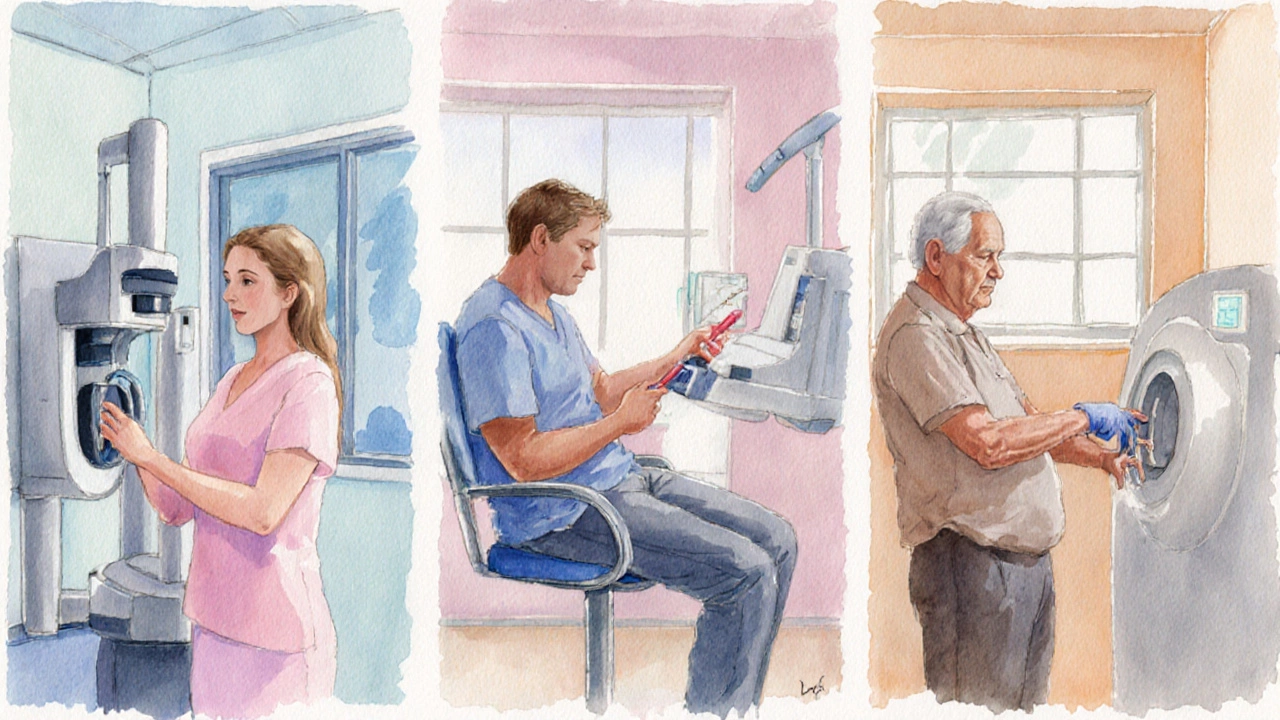
- Oct, 3 2025
- 0
Undetected Cancer Survival Calculator
Enter your details and click "Estimate Detection Timeline" to see your personalized estimate.
When we talk about undetected cancer is a malignant growth that remains hidden because it shows no noticeable symptoms, the question “how long can you live with it?” can feel both unsettling and urgent.
What does "undetected cancer" really mean?
In plain terms, cancer is an uncontrolled division of abnormal cells that can invade nearby tissue and spread to other parts of the body. When the disease progresses without causing pain, lumps, bleeding, or any other obvious sign, it stays under the radar. This silent phase is often called the “asymptomatic period” and can range from a few months to several decades, depending on the tumor’s biology and location.
How long can cancer stay hidden?
Research shows that the duration of the asymptomatic period varies wildly across cancer types. For example, prostate cancer can grow slowly for 10‑15 years before anyone suspects a problem, while pancreatic cancer may remain invisible for only a few months before it becomes life‑threatening. Below is a quick snapshot of typical silent durations:
| Cancer Type | Average Silent Duration | Common Detection Method |
|---|---|---|
| Prostate | 10‑15 years | PSA blood test |
| Breast | d>5‑7 years | Mammography |
| Colorectal | 3‑5 years | Colonoscopy |
| Lung (non‑small cell) | 2‑4 years | Low‑dose CT |
| Pancreatic | Less than 1 year | Imaging (MRI/CT) |
| Skin (melanoma) | 1‑3 years | Dermatologic exam |
These numbers are averages; individual experiences can differ based on genetics, lifestyle, and environmental exposure.
Key factors that influence how long cancer can remain undetected
- Location: Tumors deep inside the body (e.g., pancreas, liver) often grow unnoticed, whereas those near the skin or surface (e.g., skin cancer) are more likely to be spotted early.
- Growth rate: Some cancers, like certain thyroid cancers, proliferate slowly, giving the body years before any alarm bells ring. Aggressive forms such as small‑cell lung cancer multiply quickly, shortening the silent window.
- Biology and genetics: Hormone‑driven cancers (e.g., estrogen‑positive breast cancer) may stay dormant for years, while mutations in genes like KRAS can drive rapid progression.
- Patient age and immune response: Older adults often experience a blunted immune reaction, allowing tumors to expand with fewer symptoms.
- Screening habits: Regular cancer screening is the systematic testing of asymptomatic individuals to catch disease early dramatically reduces the chance of a long undetected phase.

Real‑world cases: How long did people actually live with hidden cancer?
Case studies provide a sobering perspective:
- A 68‑year‑old man in Sydney underwent an autopsy after a sudden heart attack. Pathology revealed a 6‑cm prostate tumor that had been growing for an estimated 12 years without any clinical signs. His survival rate at the time of diagnosis would have been over 95% if caught early.
- A 45‑year‑old woman complained only of mild fatigue. Imaging for a unrelated back injury discovered a 3‑cm pancreatic lesion that had likely been present for 8-10 months. Despite aggressive treatment, the disease had already spread, highlighting the razor‑thin window for pancreatic cancers.
- In a rural community, a 52‑year‑old farmer with no family history of cancer noticed a small skin spot that never changed. Five years later, a dermatologist identified it as melanoma, which had already metastasized. Early detection could have saved his life.
These stories underline the unpredictable timeline and the critical role of awareness and screening.
Why a delayed diagnosis matters for undetected cancer survival
When cancer is identified at an early stage (stageI or II), treatment success rates soar. For instance, the five‑year survival rate for early‑stage breast cancer exceeds 90%, while late‑stage (stageIV) drops below 30%. The stage at diagnosis is directly linked to the tumor’s size, spread to lymph nodes, and presence of distant metastases.
Modern oncology uses a staging system known as the TNM classification (Tumor size, Node involvement, Metastasis). Detecting cancer before it moves beyond the primary organ (T1‑2, N0, M0) keeps treatment options less invasive-sometimes surgery alone is enough.
Beyond survival, early detection often means fewer side effects, lower treatment costs, and a better quality of life.
How to improve your odds of catching cancer early
Here’s a practical roadmap you can follow:
- Know the recommended screening schedule: For example, annual low‑dose CT for high‑risk smokers, biennial mammograms for women 50‑74, and PSA testing every 2years for men over 55 (unless at high risk).
- Track subtle changes: Persistent cough, unexplained weight loss, or new lumps-even if they seem minor-warrant a medical check.
- Use biomarkers wisely: Blood tests for cancer‑associated antigens (CA‑125, CEA) can flag hidden disease, especially when combined with imaging.
- Adopt a healthy lifestyle: Diet rich in fruits, vegetables, and whole grains, regular exercise, and quitting smoking shrink the risk of many cancers.
- Maintain regular check‑ups: Even if you feel fine, an annual physical gives doctors a chance to order baseline labs and discuss any family‑history concerns.
Remember, the goal isn’t to freak yourself out-it’s to build a safety net that catches disease before it becomes a life‑threatening emergency.
Quick self‑awareness checklist
- Do you have a family history of any specific cancer? If yes, discuss genetic counseling.
- Are you over the age for routine screening of breast, prostate, colorectal, or lung cancer?
- Do you smoke, vape, or have a history of heavy alcohol use?
- Have you noticed any unexplained changes-weight loss, fatigue, persistent pain, or new skin lesions?
- When was your last full physical exam or screening test?
If you answer “yes” to any of the above, it’s time to schedule a conversation with your doctor or a specialist.

Frequently Asked Questions
Can you live for years with cancer and never know?
Yes. Certain slow‑growing cancers, such as low‑risk prostate or some thyroid tumors, can remain asymptomatic for a decade or more. Many people die of unrelated causes before the cancer is discovered.
What are the most common cancers that stay hidden the longest?
Prostate, thyroid, and certain kidney cancers often have long silent phases. In contrast, pancreatic, liver, and lung cancers usually become symptomatic within a few months.
Does early detection guarantee cure?
Early detection dramatically improves cure rates, but it’s not an absolute guarantee. Tumor biology, patient health, and treatment availability still influence outcomes.
How often should I get screened if I have no symptoms?
Screening intervals depend on age, gender, family history, and risk factors. For average‑risk adults, guidelines suggest mammograms every 2years (50‑74), colonoscopy every 10years (45+), and low‑dose CT every year for heavy smokers (55‑80).
What should I do if I suspect something but tests are normal?
Ask for a second opinion, request more sensitive imaging (MRI or PET), or monitor the symptom closely with follow‑up appointments. Persistent unexplained issues deserve re‑evaluation.
Nikhil Verma
I'm a dedicated physician with a passion for exploring the intricacies of medicine, focusing on the unique healthcare challenges in India. I spend much of my spare time writing articles aimed at improving public understanding of health issues. Balancing my clinical practice and writing allows me to reach a wider audience, sharing insights and fostering a deeper appreciation for medical advancements. I derive immense satisfaction from both treating patients and engaging with readers through my writing.